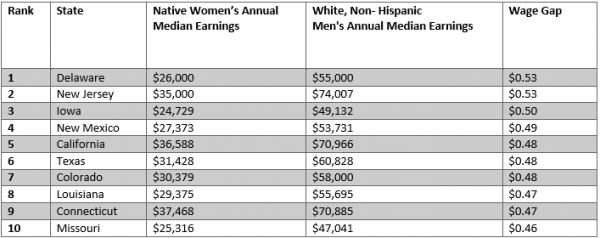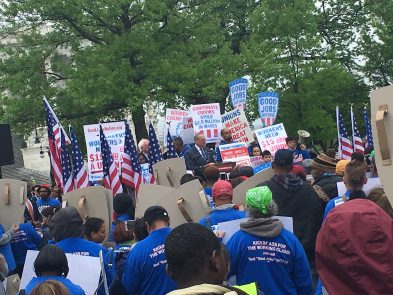Abortion rights, women of color, and LGBTQI+ people are under attack. Pledge to join us in fighting for gender justice.
For Native Women, 21 Months is Too Long to Wait for Equal Pay

This time of year conjures images of changing leaves and cozy sweaters. But, for Native women, late September offers the dismal reminder that they not only get paid 58 cents for every dollar paid to white, non-Hispanic men, but they must also work full-time until September 27 this year to earn the same amount paid to white, non-Hispanic men last year.
Native women’s wage gap results in $23,000 in annual losses. This pay disparity means Native women have to work more than 21 months to make as much as white, non-Hispanic men made in only 12 months for the same or similar work. That’s a lot of lost wages for Native women. Over the course of a 40-year career, Native women stand to lose $920,000. That’s nearly a million dollars, money that could go toward retirement, monthly expenses, or child care.
At this rate, Native women are going to have keep working long after white men retire in order to catch up. For example, in both New Jersey and Delaware, Native women will have to work until they’re 105 years old to catch up to white, non-Hispanic men’s earnings at age 60. There’s something terribly wrong with this picture.
But maybe you’re thinking: what about my state? Things can’t be that bad for Native women here. Okay, let’s take a look. The chart below ranks the ten worst states for Native women when it comes to the wage gap.

Don’t be fooled by the #1 ranking. The worst state on the list is Delaware, where Native women are only paid 47 cents for every dollar paid to white, non-Hispanic men, creating a 53-cent wage gap. As you can see from the list, the “worst” states aren’t confined to a particular geographic region but are spread out all over the country, pointing to large-scale pay disparities for Native women.
Native women deserve better than this if they are going to make ends meet and provide an economically secure life for themselves and their families.





